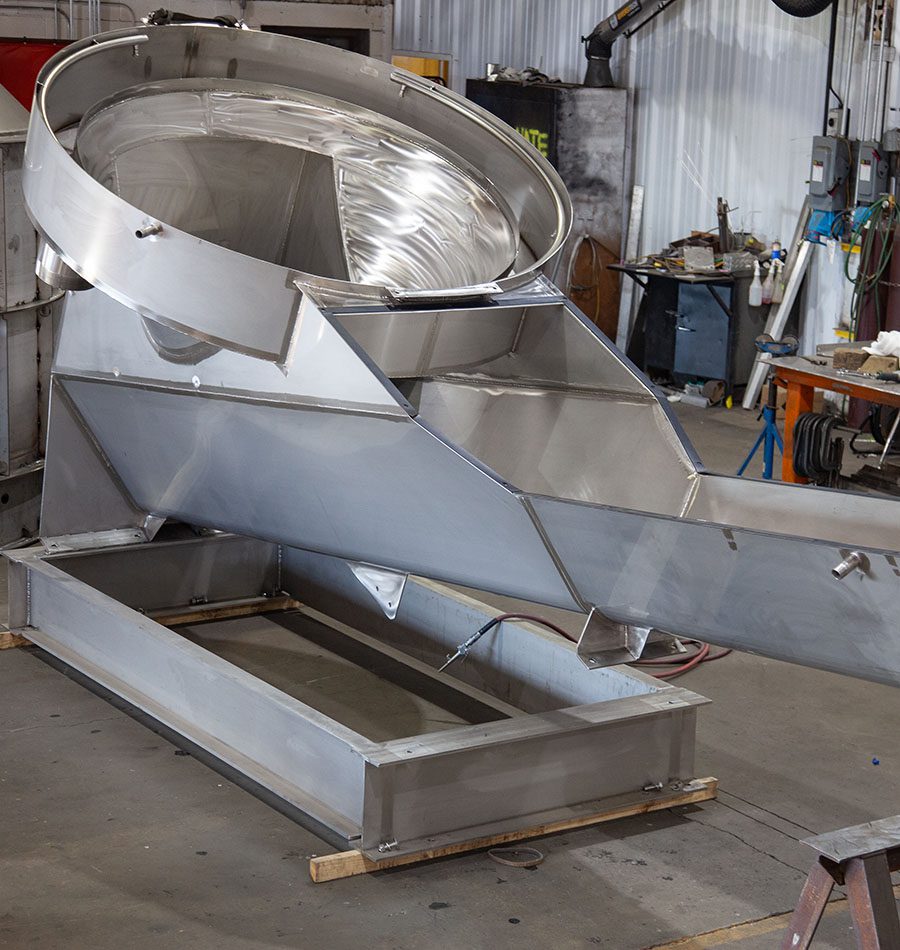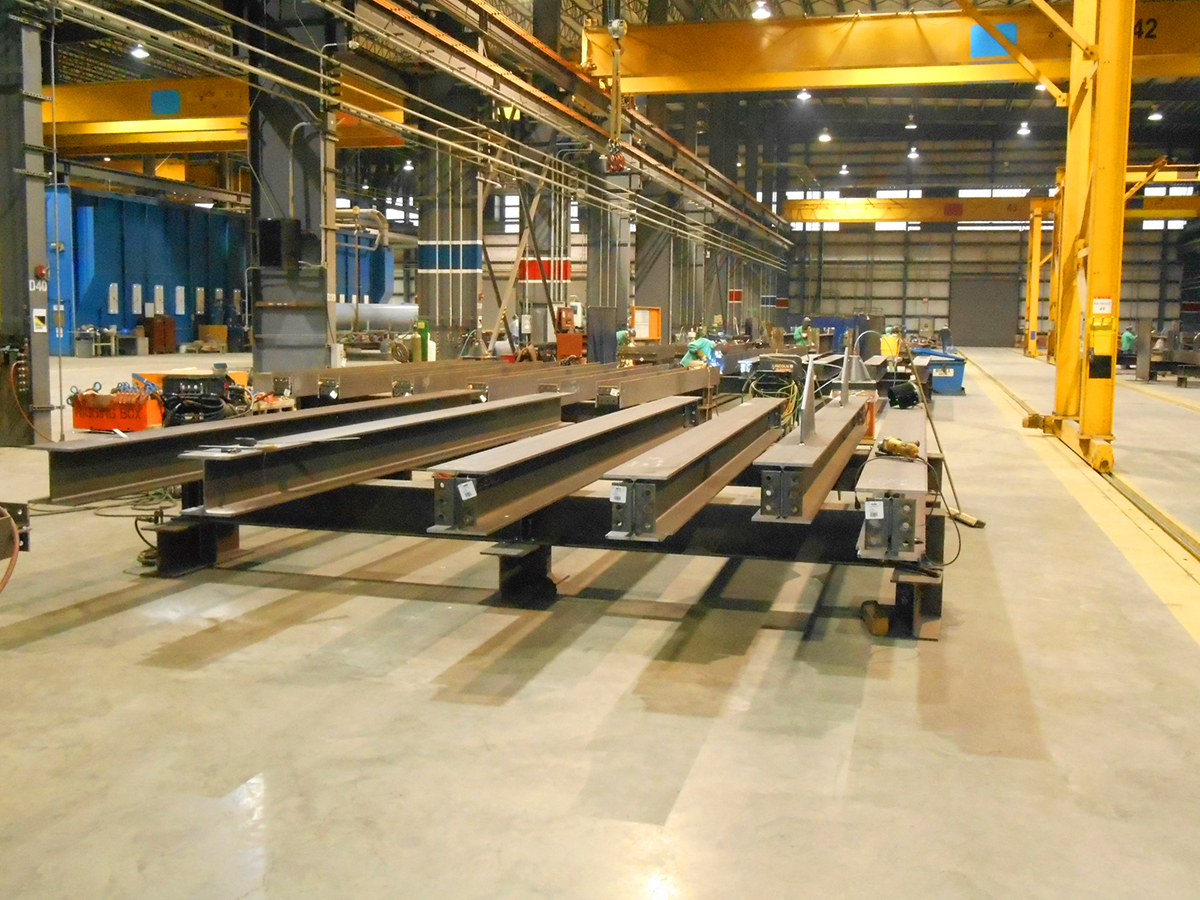Advanced Steel Fabrication Melbourne: Structure the Future Today
Advanced Steel Fabrication Melbourne: Structure the Future Today
Blog Article
Comprehensive Evaluation of Cutting-Edge Techniques in Steel Construction Industry
As the steel manufacture market remains to advance, the assimilation of advanced techniques has actually become vital for staying affordable and meeting the needs of contemporary production requirements. From laser cutting improvements to the utilization of robotics and 3D printing in steel production, the landscape of fabrication strategies is swiftly altering. With each innovation bringing its very own collection of obstacles and benefits, a thorough analysis of these techniques is extremely important for business intending to streamline their processes, improve accuracy, and eventually, boost the top quality of their steel construction result. In this dynamic market where modern technology plays a pivotal duty, comprehending the subtleties of these cutting-edge methods is not simply an alternative but a requirement for those aiming to create in advance in the ever-evolving world of steel fabrication.
Laser Cutting Developments
In the realm of steel construction, laser cutting developments have transformed the precision and effectiveness of metal shaping procedures. By taking advantage of the power of concentrated laser beam of lights, producers can now achieve exceptional levels of accuracy when puncturing numerous kinds of steels. This innovation enables intricate designs to be executed with minimal material wastefulness, making it an economical service for industries calling for high accuracy components.
One of the key advantages of laser cutting is its capacity to manage a large range of products, consisting of stainless steel, light weight aluminum, and carbon steel, effortlessly. The process produces tidy, burr-free edges, eliminating the demand for extra completing steps. Moreover, the non-contact nature of laser cutting reduces the threat of material contamination, causing higher quality output.
Furthermore, laser reducing machines can be set to make swift, exact cuts, significantly lowering production time contrasted to conventional reducing methods. This rate and precision make laser cutting particularly suitable for mass production settings where efficiency is vital. As technology proceeds to development, laser cutting is positioned to play an increasingly important duty in the steel fabrication market.

CNC Machining Innovations
The evolution of CNC machining innovations has actually introduced a new era of precision and effectiveness in the steel manufacture market. Computer System Numerical Control (CNC) equipments have actually transformed steel construction by using unmatched accuracy and repeatability in the manufacturing process. steel fabricators melbourne. One of the key developments in CNC machining is the integration of advanced software systems that enable real-time tracking and modifications, causing boosted performance and quality control
Moreover, the advancement of multi-axis CNC makers has enabled the construction of complex steel parts with detailed layouts that were previously challenging to produce. These machines can perform a variety of machining operations, including milling, drilling, turning, and grinding, all with high degrees of accuracy.
Additionally, the consolidation of automation and robotics in CNC machining has streamlined manufacturing procedures, lowered lead times, and decreased the margin of error. This assimilation of cutting-edge modern technologies not only increases performance yet likewise ensures consistent high quality throughout all fabricated steel components. In conclusion, CNC machining advancements remain to drive developments in the steel construction sector, setting new criteria for accuracy and efficiency.
Automated Welding Technologies
Automated welding modern technologies have actually changed the steel fabrication sector, improving performance and precision in the welding procedure. These advanced modern technologies utilize computer-controlled systems to automate the welding procedure, bring about higher efficiency degrees and improved weld quality. Among the crucial advantages of automated welding is the ability to do intricate welds with consistent precision, reducing the probability of mistakes and rework.
Robot welding systems go to the forefront of automated welding modern technologies, using exceptional rate and accuracy. These systems can deal with a wide variety of welding tasks, from straightforward to go to the website elaborate, with simplicity (Alpha reo). By making use of advanced sensing units and software application, robotic welders can adapt to variations in product and joint geometry, making certain an uniform and trustworthy weld
Additionally, automated welding modern technologies enhance work environment security by decreasing the direct exposure of human welders to dangerous fumes and intense warm. As the steel manufacture industry continues to develop, integrating automated welding innovations will certainly be necessary for companies seeking to remain affordable and fulfill the expanding demands for high-quality bonded products.
Robotics Integration in Manufacture
Using robotic systems in manufacture processes has actually come to be a crucial strategy for boosting efficiency and precision in modern manufacturing settings. Robotics combination in steel manufacture provides a myriad of benefits, consisting of enhanced performance, boosted quality control, and improved security steps. These innovative robotic systems are equipped with sophisticated sensing units and programming abilities, allowing them to execute detailed tasks with a high degree of precision and repeatability.
One of the crucial benefits of robotics assimilation in steel fabrication is the capacity to automate repetitive jobs, such as material handling, reducing, welding, and assembly procedures. This not just quickens manufacturing cycles yet additionally reduces the threat of human mistake, leading to higher general product high quality. Furthermore, robots can run 24/7, dramatically improving manufacturing output and meeting tight project deadlines.

3D Printing in Steel Manufacturing
Having revolutionized the steel fabrication market through robotics combination, the growing expedition of 3D printing in steel production is positioned to additional breakthrough the realm of modern-day manufacturing techniques. 3D printing, likewise understood as additive manufacturing, provides unprecedented style freedom and complexity, allowing the creation of complex steel structures that were formerly unattainable with typical manufacturing techniques. By utilizing computer-aided style (CAD) software, makers can precisely manage the layer-by-layer deposition of steel material, leading to get rid of enhanced geometries and capabilities.
Among the essential advantages of 3D printing in steel manufacturing is its capability to decrease material waste considerably. Unlike subtractive manufacturing procedures where excess product is cut away, 3D printing just makes use of the necessary quantity of steel required for the last part. This efficiency not only leads to cost savings however additionally aligns with sustainable manufacturing methods by lessening environmental impact.
Furthermore, 3D printing allows fast prototyping and customization, enabling for the manufacturing of small batches of complex steel components with short preparations. As the modern technology continues to develop and become a lot more available, its Source assimilation into mainstream steel manufacture processes is anticipated to drive technology and effectiveness across the market.
Conclusion
In conclusion, the steel manufacture industry has actually seen significant improvements in strategies such as laser cutting, CNC machining, automated welding, robotics assimilation, and 3D printing. These innovative modern technologies have transformed the way steel products are manufactured, causing raised cost-effectiveness, accuracy, and effectiveness. Continued financial investment in these ingenious strategies is important for the industry to stay competitive and meet the needs of modern production procedures.
As the steel manufacture industry continues to advance, the integration of advanced techniques has actually ended up being vital for remaining competitive and satisfying the demands of contemporary production standards.One of the try this web-site key advantages of laser cutting is its capacity to manage a vast range of materials, consisting of stainless steel, light weight aluminum, and carbon steel, with convenience.Automated welding innovations have actually changed the steel construction market, improving effectiveness and precision in the welding process.Having transformed the steel fabrication industry via robotics assimilation, the expanding expedition of 3D printing in steel manufacturing is poised to additional breakthrough the realm of modern manufacturing techniques.In verdict, the steel fabrication industry has seen substantial innovations in techniques such as laser cutting, CNC machining, automated welding, robotics integration, and 3D printing.
Report this page